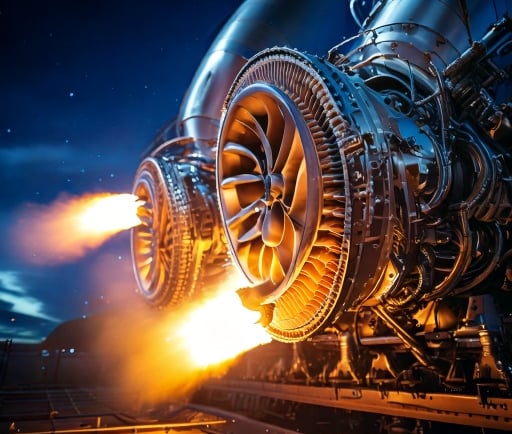The Power of RS-25 Rocket Engines: A Gateway to Space Exploration


Introduction to RS-25 Rocket Engines
The RS-25 rocket engines, renowned for their reliability and performance, serve as a critical component in modern space exploration. Originally developed for the Space Shuttle program, these engines have been modified and repurposed for use in NASA's Space Launch System (SLS), paving the way for a new era of interplanetary travel. Understanding the power and capabilities of RS-25 engines is essential for appreciating the progress of rocket technology.
Technical Specifications and Innovations
The RS-25 engine boasts an impressive thrust of approximately 500,000 pounds at sea level, making it one of the most powerful rocket engines ever built. This capability allows the SLS to carry substantial payloads, enabling deep space missions that extend beyond low Earth orbit. Significantly, the RS-25 features a unique combination of liquid hydrogen and liquid oxygen propellants, achieving highly efficient performance while minimizing environmental impact.
Moreover, the integration of advanced technologies such as digital avionics and enhanced thermal protection has positioned the RS-25 as a leader in the field. These innovations ensure that the engines can withstand the extreme conditions of launches and the rigors of space travel. The flexibility of the RS-25 design also permits various configurations based on mission requirements, demonstrating the versatility of this powerful engine.
The Future of Space Exploration with RS-25 Engines
As we stand on the cusp of the next era in space exploration, the role of RS-25 rocket engines cannot be underestimated. With ongoing missions to the Moon and Mars, the engines are poised to take center stage in NASA's Artemis program. These missions aim not only to return humans to the Moon but also to establish a sustainable presence there, ultimately facilitating future crewed missions to Mars.
Beyond lunar exploration, the adaptability and thrust capabilities of the RS-25 will be instrumental in enabling deeper space missions. The planned upgrades and sustained development of the RS-25 will ensure this technology remains at the forefront of rocket propulsion. The collaborative efforts between engineering teams and scientists are crucial in realizing the full potential of the RS-25, propelling humanity further into the cosmos.
In conclusion, the power of RS-25 rocket engines showcases what is possible with modern aerospace technology. Their unparalleled performance and flexibility position them as a critical asset in both current and future exploration endeavors. As we continue to push the boundaries of what we can achieve in space, the RS-25 engine remains a powerful symbol of our quest for knowledge and discovery beyond our planet.
